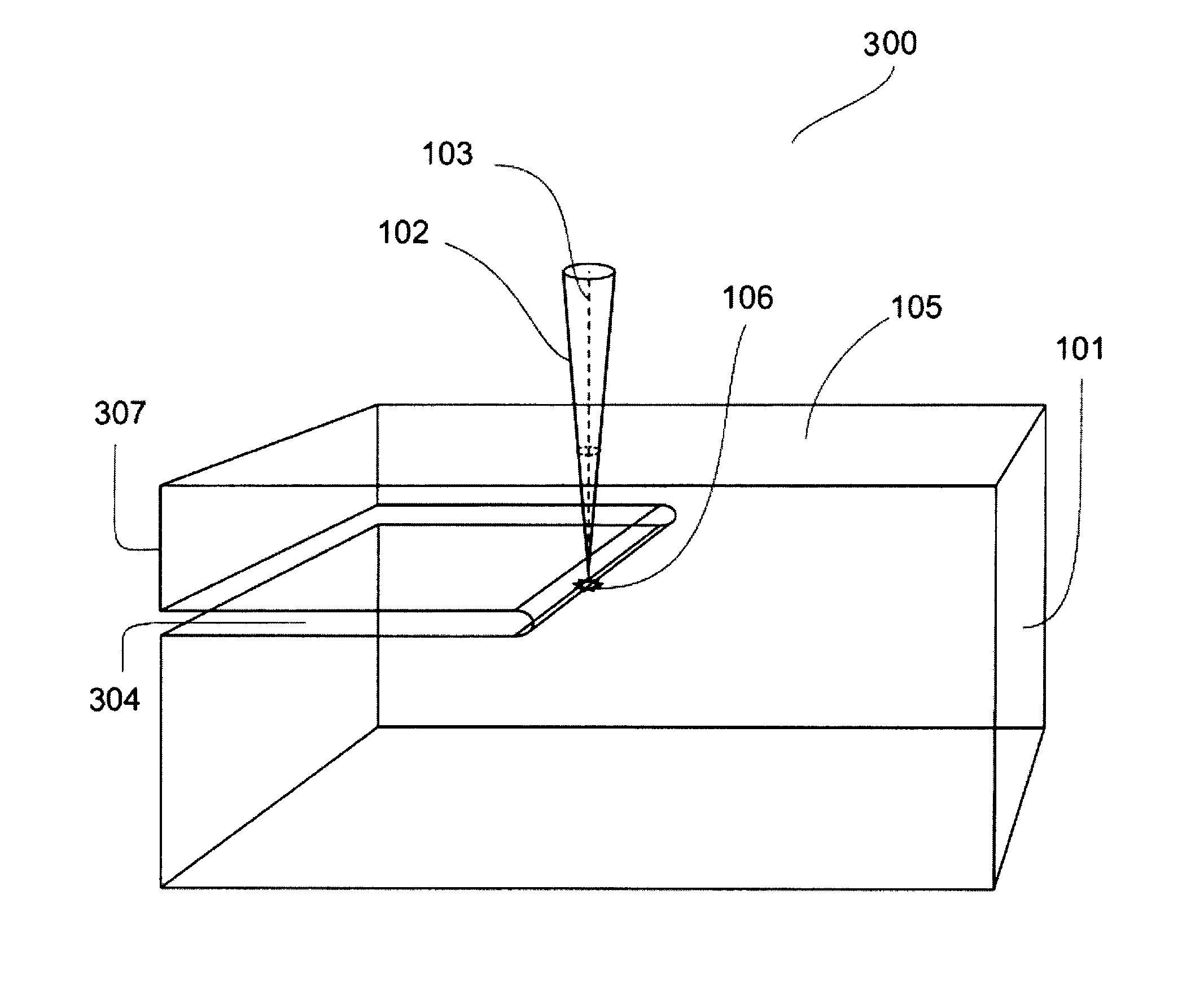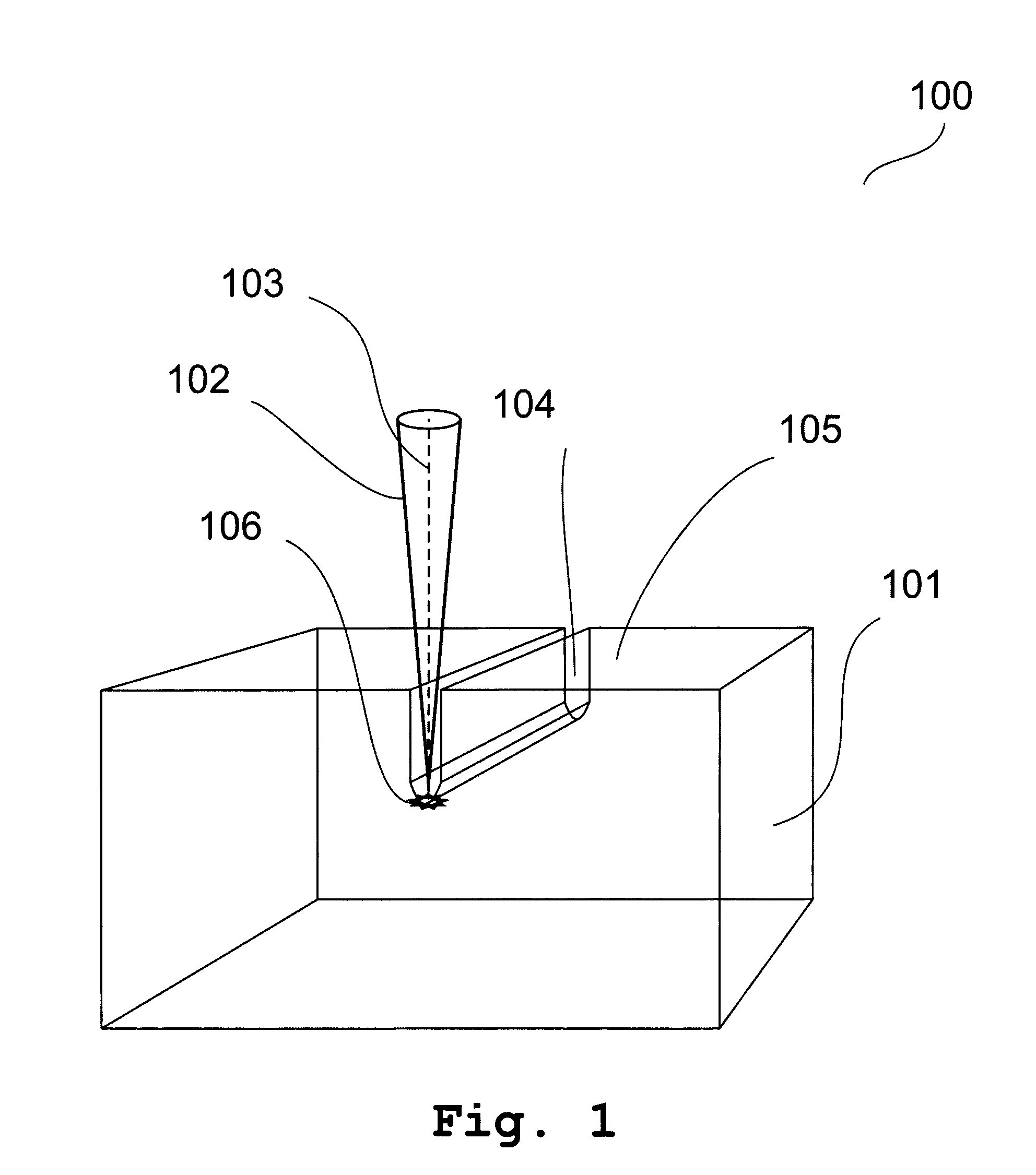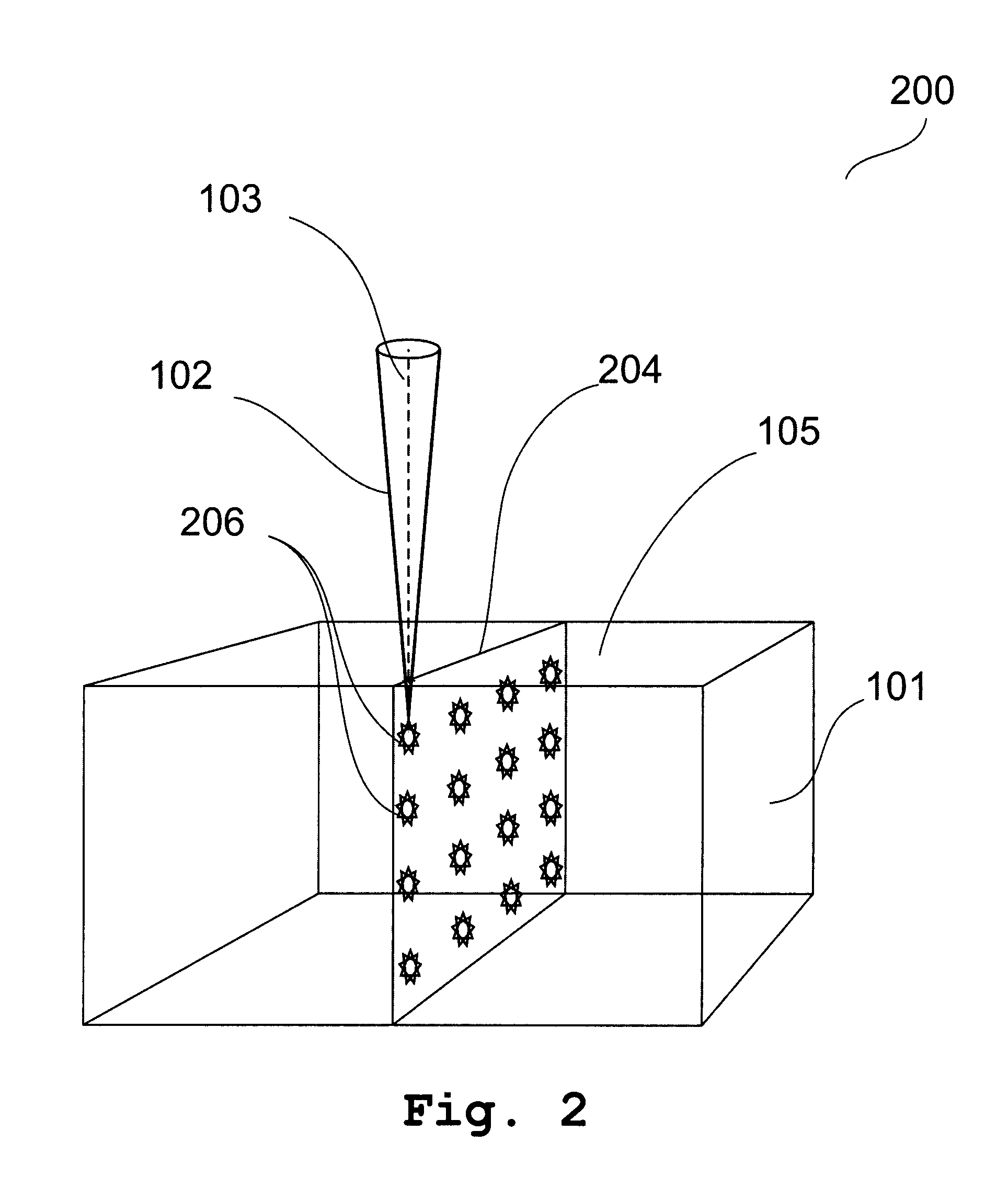Method of Separating Surface Layer of Semiconductor Crystal Using a Laser Beam Perpendicular to the Separating Plane
a laser beam and semiconductor crystal technology, applied in the direction of polycrystalline material growth, after-treatment details, manufacturing tools, etc., can solve the problems of overdeposition of evaporated material additional consumption of expensive semiconductor materials, microcracks on the cut edges, etc., to achieve the reduction of the mechanical strength of the crystal in the separation plane with the set of local regions
- Summary
- Abstract
- Description
- Claims
- Application Information
AI Technical Summary
Benefits of technology
Problems solved by technology
Method used
Image
Examples
example 1
[0038]FIG. 3 shows the scheme 300 illustrating the first variation of the method by the example of separating the surface layer of the gallium nitride semiconductor crystal. For this purpose Nd:YAG laser is used which operates in the mode of modulated Q-factor, with frequency doubling and generates light pulses with λ=532 nm, energy of 5 μJ, duration of 5 ns and repetition rate of 1000 Hz. Laser beam is focused to the spot of 16 μm in diameter which provides energy density of 2 J / cm2.
[0039]Under action of the Nd:YAG laser beam 102 with wavelength λ=532 nm weakly absorbed in the gallium nitride crystal 101, focused under the upper crystal surface 105 at the depth of 100 μm, the crystal is locally heated up to temperature higher than 900° C. leading to chemical decomposition of gallium nitride crystal into gaseous nitrogen and liquid gallium in the vicinity 106 of the laser beam focus. Movement of the laser beam 102 focus at velocity of 1.5 cm / s in the horizontal (lateral) plane paral...
example 2
[0040]FIG. 4 shows the scheme 400 illustrating the first variation of the method by the example of separating a thin semiconductor layer comprising a grown light diode structure AlGaN / InGaN / AlGaN under the upper surface, from semiconductor crystal. For this purpose Nd:YAG laser is used which operates in the mode of modulated Q-factor, and generates light pulses with λ=532 nm, energy of 5 μJ, duration of 5 ns and repetition rate of 1000 Hz. Laser beam is focused to the spot of 16 μm in diameter which provides energy density of 2 J / cm2.
[0041]Under action of the Nd:YAG laser emission 102 with wavelengthλ=532 nm weakly absorbed in the gallium nitride crystal 101 and in the light diode structure 407 AlGaN / InGaN / AlGaN, focused under the surface 105 at the depth of 50 μm, the crystal is locally heated up to temperature higher than 900° C. leading to chemical decomposition of gallium nitride crystal into gaseous nitrogen and liquid gallium in the vicinity 106 of the laser beam focus. Moveme...
example 3
[0042]FIG. 5 is a scheme 500 illustrating the first variation of the method by the example of separating a thin semiconductor layer comprising a grown light diode structure AlGaN / InGaN / AlGaN in the base, from semiconductor crystal.
[0043]For this purpose Nd:YAG laser is used which operates in the mode of modulated Q-factor at λ=532 nm, and generates pulses with energy of 5 μJ, duration of 5 ns and repetition rate of 1000 Hz. Laser beam is focused to the spot of 16 pm in diameter which provides energy density of 2 J / cm2. Under action of the Nd:YAG laser emission 102 with wavelength λ=532 nm weakly absorbed in the gallium nitride crystal 101, but absorbed in the light diode structure AlGaN / InGaN / AlGaN, focused deeply under the upper crystal surface 105, the crystal is locally heated up to temperature higher than 900° C. leading to the chemical decomposition of gallium nitride crystal into gaseous nitrogen and liquid gallium in the vicinity 106 of the laser beam focus. Movement of the l...
PUM
| Property | Measurement | Unit |
|---|---|---|
| temperature | aaaaa | aaaaa |
| temperature | aaaaa | aaaaa |
| velocity | aaaaa | aaaaa |
Abstract
Description
Claims
Application Information
 Login to View More
Login to View More - R&D
- Intellectual Property
- Life Sciences
- Materials
- Tech Scout
- Unparalleled Data Quality
- Higher Quality Content
- 60% Fewer Hallucinations
Browse by: Latest US Patents, China's latest patents, Technical Efficacy Thesaurus, Application Domain, Technology Topic, Popular Technical Reports.
© 2025 PatSnap. All rights reserved.Legal|Privacy policy|Modern Slavery Act Transparency Statement|Sitemap|About US| Contact US: help@patsnap.com



